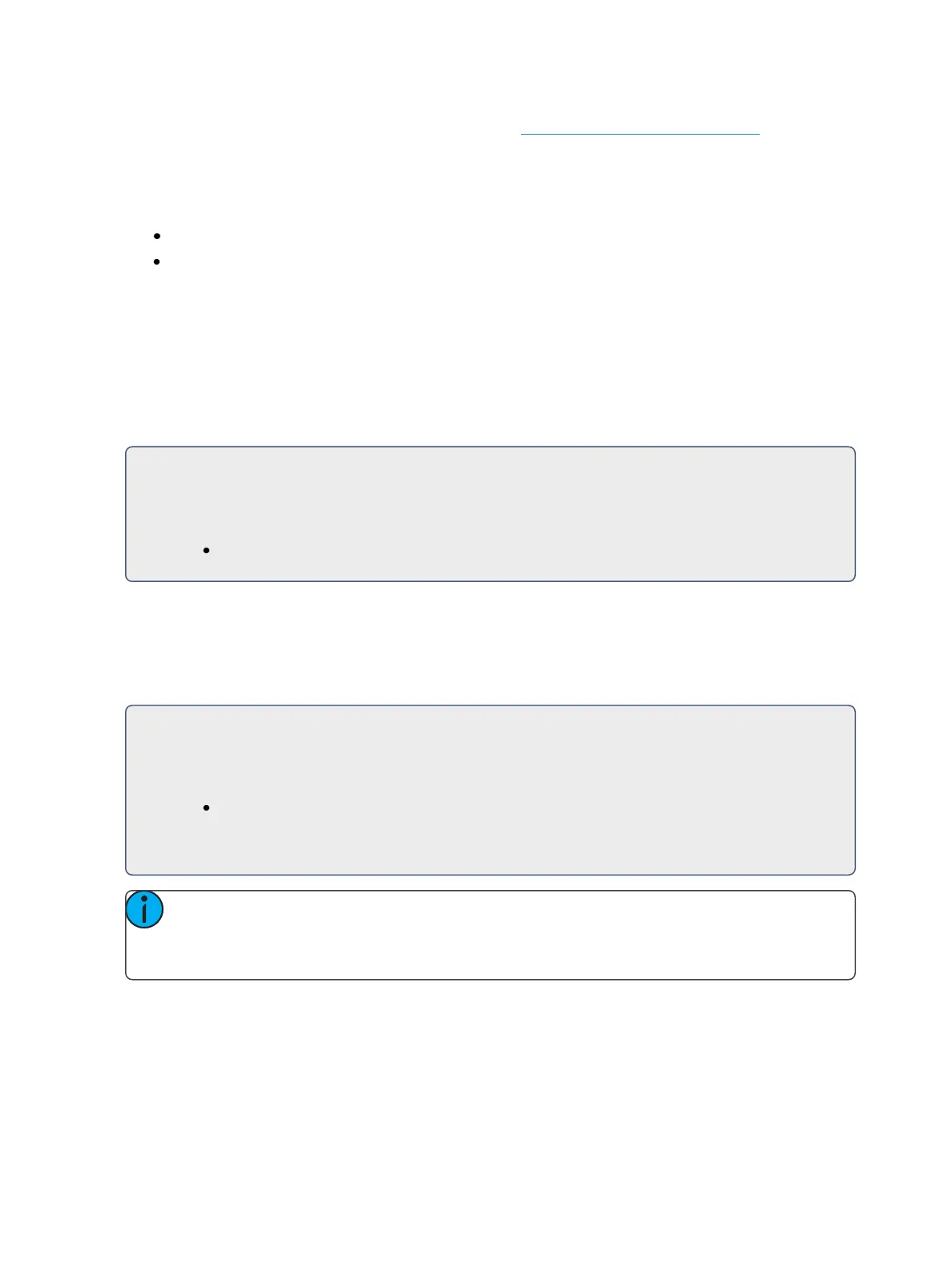Using Mark 219
Priority marked cues display indiciators in the PSD. See Mark Symbols (on the next page) for more
information.
Applying Flags as Channels are Marked
You may also apply a mark flag to a previous cue by doing the following:
[select channels] [Mark] [Cue] [5] [Enter]
[Record] [Cue] [8] [Enter]
This would mark cue 5 to perform any non-intensity moves stored in cue 8. The display indicators for
this mark would be the same as shown in the previous example. As long as intensity is at zero within
the cue range, if there are any non-intensity move instructions for these channels between these
two cues, they will be removed.
It is also possible to mark only certain parameters for marked moves, while allowing live moves for
other parameters.
For Example:
If you wanted to mark only focus, and allow all other parameters to transition while the light
is fading up, you can press:
[1] [Thru] [10] [Focus] [Mark] [Enter]
Mark Earliest
The {Earliest} command can be used with [Mark] to mark the channel into the cue after the last intens-
ity moved from a nonzero level to 0. The mark is stored and behaves exactly as if you had typed the
cue number instead of {Earliest}. This works in blind, or in live if you record afterwards.
For Example:
Cue 2 moves the intensity for channel 1 to 0, Cue 3 thru 4 have no intensity for channel 1,
and Cue 5 has the intensity move to full. From Cue 5:
[1] [Mark] {Earliest} [Enter]
This will work the same as [1] [Mark] [Cue] [3] [Enter], and will mark from cue 3 to cue 5.
Note: [Mark] {Earliest} will mark through block cues or blocked intensity moves of 0, until it
finds the earliest intensity move to 0. If the cue immediately before the cue being marked is
the earliest intensity move to 0, it will mark in that cue.
{Earliest M} will mark to the earliest cue that already has a mark flag. If a mark cue doesn't exist, {Earli-
est M} will behave like {Earliest} and will mark to the earliest possible cue.

